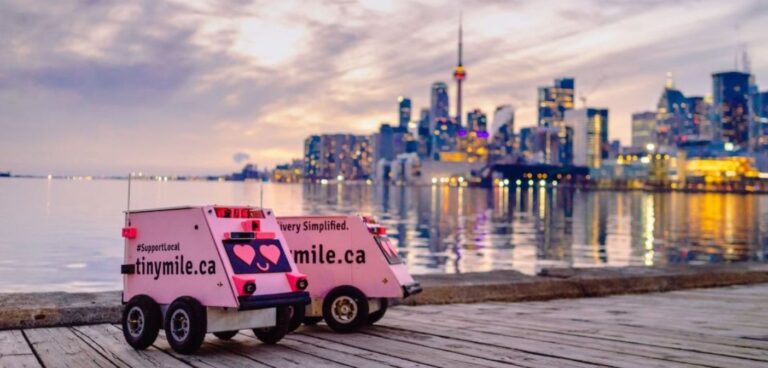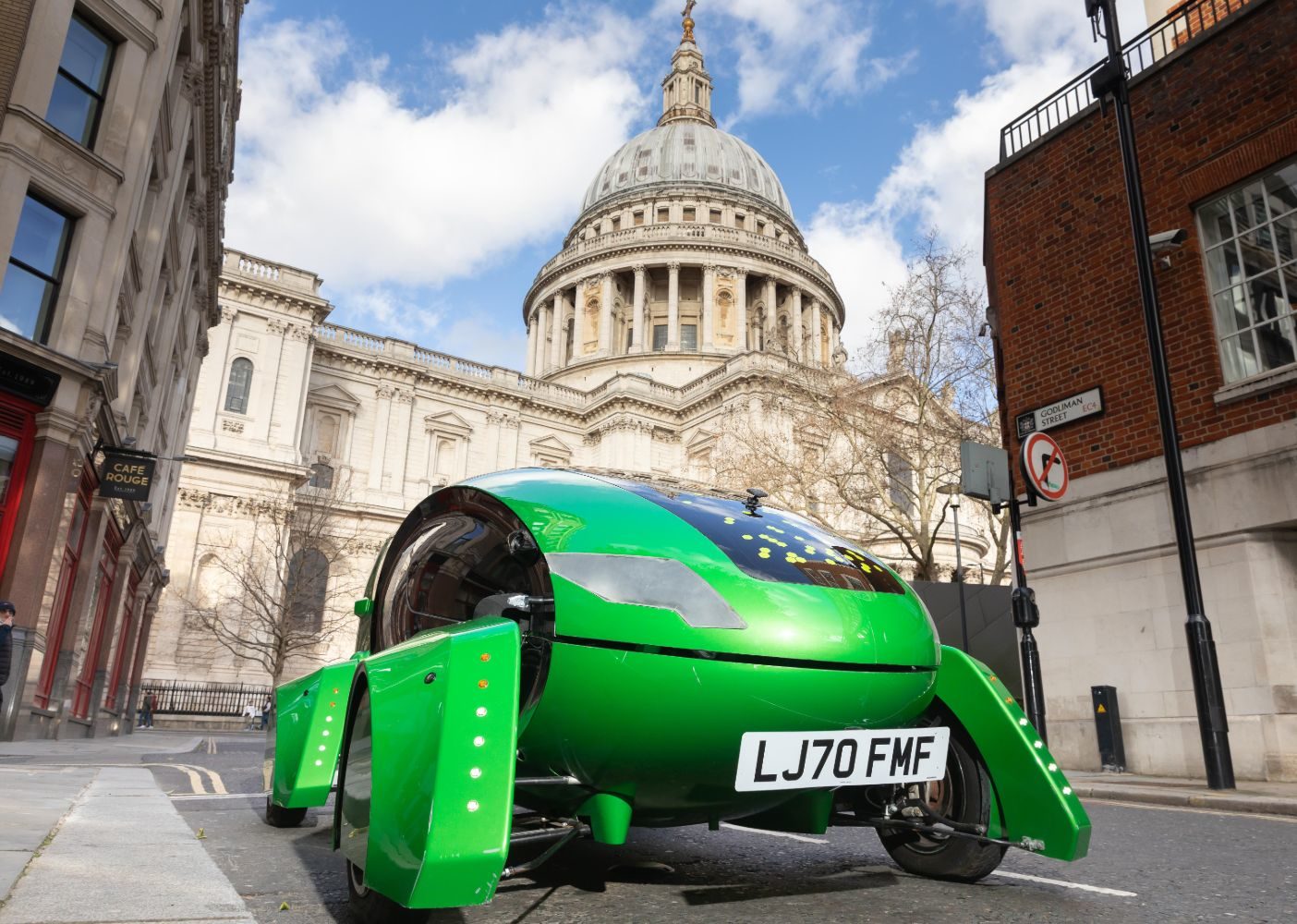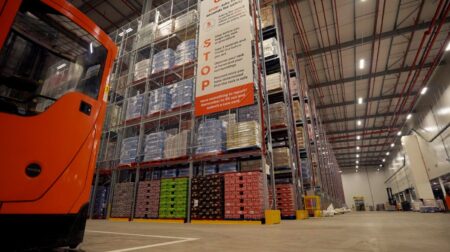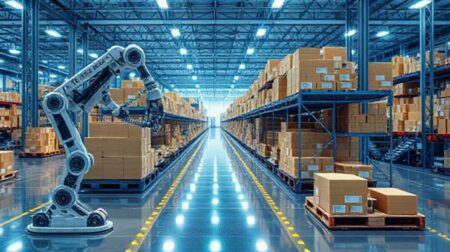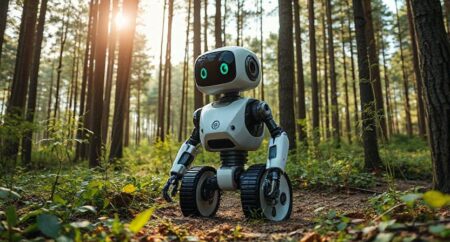Delivery robots have been heralded as a contactless food and parcel delivery saviour that could solve labour shortages and lower carbon footprints. But without a standardised approach, will these little bots stall? Katie Searles reports…
During the various lockdowns introduced as part of Covid-19 protocol, the way people shopped changed. The growth in e-commerce has been well documented, but it is not simply the way we purchase items that has evolved; the way these items are delivered has also been altered. Whether it is a shift to sustainable transport modes or a concentration on safe, contactless delivery, the methods of getting goods to people has transformed. Technology can be championed as one driving force of such a transition, the development of remote controlled and even fully autonomous robotic delivery platforms has the potential to bring a novel delivery form to our streets. But while some cities are experimenting with delivery bots, others are putting a stop to these pavement-riding systems.
In December last year, Canada’s Toronto City Council voted to halt the use of sidewalk delivery robots until it could feasibly develop a pilot programme with certain specifications. The subsequent ban followed concerns raised by the Toronto Accessibility Advisory Committee, which expressed unease over delivery robots causing hazards for those with mobility and vision issues, the elderly and children.
“Sidewalks are an important publicly-funded public resource, created for pedestrians to safely use,” said David Lepofsky, chair of the Accessibility for Ontarians with Disabilities Act Alliance, in a letter to the council. “Their safe use should not be undermined for such things as private companies’ delivery robots.”
The council has, however, approved a Transportation Innovation Challenge to be introduced in the second quarter of 2022 that would enable the use of delivery robots at the Canadian National Exhibition – an annual event that takes place in Toronto during the final 18 days leading up to and including Canadian Labour Day, the first Monday in September – as a proving ground for the technology.
The move has been criticised by delivery robot operator Tiny Mile, whose CEO, Ignacio Tartavull, recently wrote in a LinkedIn post: “The only problem is that there are no deliveries to be done there… how do you fundraise as a start-up if you have no customers using your product? All we are asking for is proper research, not creative political ways to pretend that you support something while you are doing the opposite.”
If Toronto goes ahead with a wider pilot programme, robots will need to be marked with the operator’s name and contact details. Technology such as audible signals or ref lectors with lights and brakes would need to be included on the platforms, with insurance in place. Toronto City Council also stipulates that both autonomous and remote-controlled systems must yield to pedestrians and won’t be able to travel above 10k m/ h (6mph).
The Canadian city is not the first to prohibit the use of delivery robots. San Francisco stopped similar services for nearly two years until it awarded Serve Robotics a permit to trial the technology in August 2019. And in February 2022, Ottawa’s transport committee announced that so-called ‘micro-utility’ devices would not be permitted on roads, sidewalks, bike paths or any other city infrastructure.
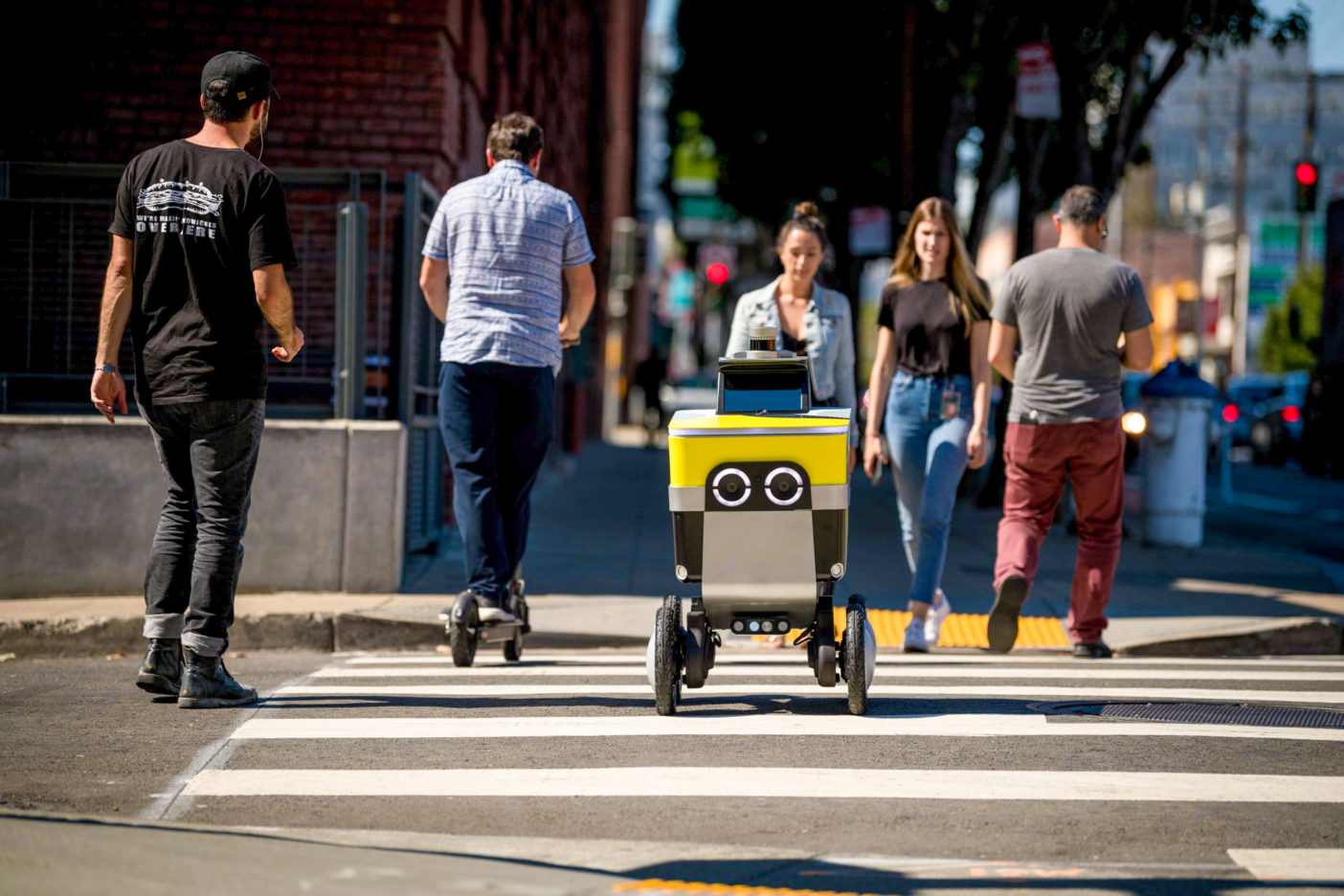
Acceleration in the East
While cities in Northern America are playing it safe when it comes to sidewalk robotics, Asia continues to invest in alternative ways to deliver goods. According to Thomas Shiekman, head of automotive and mobility at international development consultancy Intralink, Asia represents a significant opportunity for western robotics developers in the burgeoning world of last-mile delivery.
“And this isn’t just science projects: goods are being delivered around China, South Korea and Japan every day by autonomous vehicles,” says Shiekman. “Chinese companies already have thousands of delivery robots on the roads daily and many companies across Asia are ramping up development, some starting with geofenced solutions such as delivery systems within business parks. “Most major players that we speak to plan to start commercial production later this year, starting with f leets of a few hundred vehicles.”
One such “mayor player” that can be seen in Japan is FedEx, whose’s small parcel specialty same-day delivery device, Roxo, features pedestrian-safe technology, multiple cameras and lidar, allowing the zero-emission, battery-powered robot to be aware of its surroundings.
These features are coupled with machine-learning algorithms to detect and avoid obstacles, plot a safe path, and allow the robot to follow road and safety rules. Proprietary technology makes it highly capable, allowing Roxo to navigate unpaved surfaces, kerbs, and to even climb deep f lights of steps for a door-to-door delivery experience.
“We are thrilled to have Roxo in Japan, a country that is a global leader in robotics implementation,” says Kawal Preet, president of AMEA region at FedEx Express. “Roxo is truly an innovation opening new possibilities for on-demand, same day, hyper-localised delivery.
“As we sit at the intersection of physical and digital networks, Roxo provides a glimpse of the future of logistics, where customers can enjoy same-day, contactless delivery services at their doorsteps,” continues Preet. “With businesses of all kinds embarking on digital transformation, we look forward to collaborating with future-ready companies to advance delivery services in Japan and elsewhere in Asia Pacific.”
Elsewhere, South Korea is ensuring that it has the correct rulings in place to enable the safe and proper introduction of delivery robots. In January 2022, the Korean government announced plans to produce a legal definition by the end of this year, thus enabling delivery robots to operate on public roads.
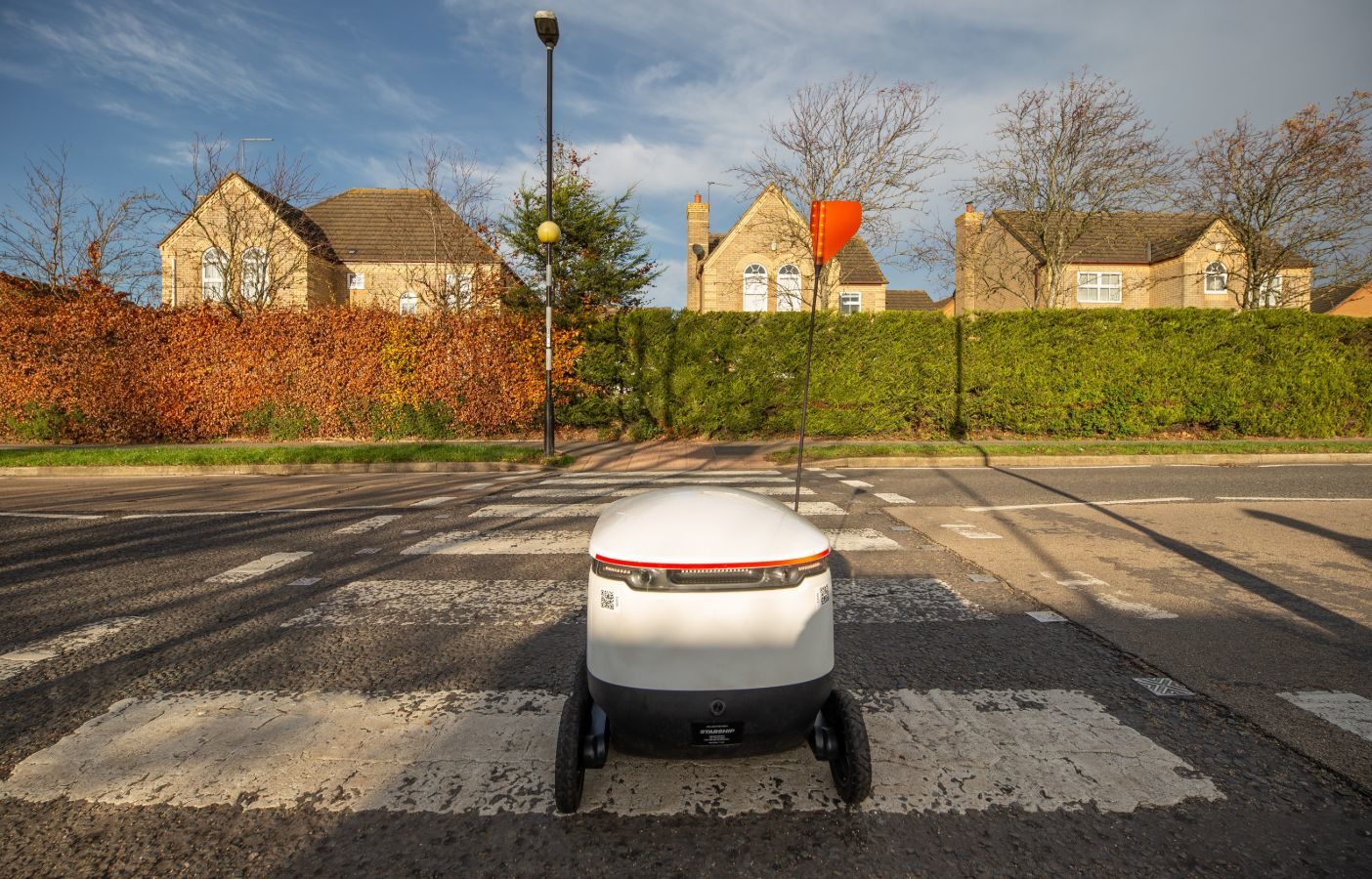
Setting the standard
While countries such as South Korea, which are currently passing legislation for delivery robot operations, are undoubtedly moving in the right direction, there is actually very little currently in place when it comes to recognised standards. Hence, the Urban Robotics Foundation (URF), has been established to develop the ISO 4448 series for ground-based automated mobility. The membership organisation, based in Canada, brings together municipal, corporate and academic partners and is working to set up the parameters and procedures for the loading and unloading of passengers and goods with automated motor vehicles at the kerbside, and the movement of robotic service vehicles within pedestrian spaces within cities, towns and suburbs.
“We are not set up with the proper registration systems and proper identification systems that are commonplace on a vehicle, such as a license plate. We don’t have a standard policy for those kinds of things,” says URF founder Bern Grush. “And there’s no protocol for the police to halt or inspect a robot. There’s no protocol for the police who close a street to deflect these robots to go a different way. None of this has been established.”
Grush stresses that, while he understands the “exciting potential of technology”, these platforms could potentially be misused, which might result in unintended consequences. He uses a building fire as an example. “Delivery robots have been programmed how to get from A to B, but what happens if a road is closed to enable emergency services to deal with a fire? If there are two teleoperators looking after a handful of robots then one can take over and divert the system. But what happens when the market, and city streets, are flooded with, say, 40,000 of these things?”
Grush also expresses concern that not only will there be thousands of robots on our streets, but they’ll all be from “30 different companies – there’s FedEx, there’s DoorDash, there’s UberEats. And do we have one teleoperation system for all 30? No! How do we coordinate that?”
Tim Shepheard-Walwyn, senior manager at Sprint Reply UK, specialists in chatbot technology and robotic process automation, suggests establishing a “localised last-mile distribution hub” model that aligns with robotic technology possessing sufficient range to make deliveries feasible. “Regulatory procedures also need to enable competition in the marketplace and work to ensure that small numbers of robotic delivery pilots are inclusive of niche operators who can introduce disruption and innovation” says Shepheard-Walwyn.
Signed, sealed and delivered?
There will also be physical barriers to overcome. Like more conventional shipping methods, the use of robotics does not necessarily ensure first-time delivery, says Seb Robert, CEO and founder of same-day delivery company, Gophr. “The biggest issue is one we’ve all experienced even when there’s a human involved in delivering your parcel: not getting it. Robotic delivery solutions are having some success in controlled environments that are more wheelchair-access friendly than your typical city, such as college and university campuses, but they demand the recipient go and collect from the robot.”
Could this be another stumbling block for robotic deliveries? Why would consumers use a robot they have to find to collect their groceries, lunch or parcel when a human courier comes to them? According to Robert, for these solutions to succeed both practically and financially, the companies involved must “find a way to create silent, dexterous robots that don’t pose a risk to public safety and can navigate the myriad obstacles that a typical delivery person does and cost less to run”.
“Your typical Amazon driver or postie can deliver 250 parcels in one run,” says Robert. “Your typical Uber rider probably does four or more drops an hour during peak, whilst covering a radius of two or three miles in London, or further in less densely populated areas. Those are the numbers to beat,” he adds. Still, with financial backing and developers looking to “do ambitious things”, Robert believes the future is positive for robotic deliveries. “Anyone that’s in the field of developing the building blocks that we need to run the next generation of logistics tech is doing good work in our view,” says Robert. “I believe the robots everyone wants are further away than we’re led to think, but once it happens it will feel very sudden.”
Shepheard-Walwyn agrees, “because consumer demand is there to expand on an expectation of near-instant delivery. There is also the opportunity for developers to significantly increase the customer experience by resolving current delivery challenges such as only delivering when someone is home – or perhaps on demand once a recipient has confirmed that they are home – and reducing costs and carbon footprint through ensuring more deliveries are achieved ‘first time’,” he concludes.
Public backing
The British public was recently given the opportunity to invest in the Kar-go Delivery Bot after developer Academy of Robotics opened its latest funding round to individuals. The £20m pre-Series A fundraiser was also opened to professional and retail investors looking to support the development of the electric autonomous last-mile delivery vehicle. Academy of Robotics has already secured a £1m investment and in April 2021 it received a further £1m in match-funding through the UK government’s Future Fund scheme.
William Sachiti, CEO and founder of Academy of Robotics, says: “Having achieved so much since our last fundraise, we are excited to launch our next round, offering the community of individual investors a chance to participate in the high-growth autonomous vehicle and robotic technology space in the UK. As we support the UK competing for its rightful share of the global autonomous vehicle sector, we can, at the same time, alleviate some of society’s challenges, including supply-chain pressures and air pollution.
Sustainable shipments
In April 2018 Milton Keynes Council introduced emission-free autonomous delivery robots as part of its commitment to become carbon neutral by 2030 and carbon negative by 2050. Initially, the electric robots were used for grocery deliveries by convenience retailer Co-op and then by Costa Coffee. Now the council has published an internal study that reviews the early impact of zero-emission robots in the city. It has calculated that 280,000 car journeys have been avoided, equating to over 500,000 miles. This in turn has seen 137 tonnes of CO2 and 22kg of NOx saved, with a reduction of 23kg of PM10 and 12kg of PM2.5 in the volume of micro-particles in the air.
Jennifer Willson-Marklew, cabinet member for climate action and sustainability, Milton Keynes Council, says: “We’re delighted this service is helping residents and businesses receive deliveries in an efficient and sustainable way. The operations are a great success, and the results are testament to how thinking differently about our carbon challenges can deliver better outcomes all round.”
This article originally appeared in the April 2022 issue of Robotics & Innovation Magazine

